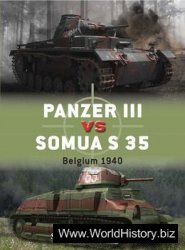There are no signs that anyone in the West learned much from the 1939 Polish campaign. In fact, there was little sign that anyone had yet digested the lessons of the 1914 Battle of the Marne. Detailed accounts of the Polish fighting were available, but many interpreted them to mean that Poland had been crushed in a gigantic battle of attrition, speeded up by the superior material might of the Germans.
In Britain and in France, where the earliest tanks had been pioneered, there was an ambivalent attitude to the German victories in Poland. It was a chance for the advocates of armor to reaffirm that the tank had brought victory in 1918. Now, they said, great armies of heavy tanks had ripped open the Polish front in just the same manner. Some experts went further and claimed that the German tank armies had won their victory by following meticulously the writings of Englishmen such as J. F. C. Fuller and B. H. Liddell Hart. Other commentators said that the decisive factor was the armies with which the Russians invaded Poland on the seventeenth day of the fighting.
To what extent the Red Army’s brutal participation brought the final collapse of Polish resistance must remain a matter of conjecture, but most of the other interpretations of what had happened were wrong. The tank had been a failure in the First World War, and in 1939 the Germans used mostly thinly armored, lightweight models. There were no great tank battles, no sizable tank concentrations, and certainly no tank armies. The German encirclement, accomplished with mobile forces, was a direct development of traditional German military theories, as was the simultaneous Kesselschlacht of the frontier regions.
The word “blitzkrieg” has been attributed to Hitler, Time magazine, and Liddell Hart. Guderian’s chief of staff. General Nehring, is sure that the word is not of German origin.23 Whatever its etymology, the ideas behind the word are certainly German. Lightning-fast war had been an essential part of Prussian military thinking since long before Bismarck. It arose from the fear that if Prussia engaged one enemy in a lengthy war, other enemies would have joined in. A fast decision avoided this danger. In more modern times, supply lines threatened by the naval forces of France and Britain and Germany’s lack of raw materials made long wars even more hazardous.
In addition to this strategic idea, “blitzkrieg” became a convenient way to refer to the tactical methods used. The American Heritage Dictionary defines “blitzkrieg” as “a swift, sudden military offensive, usually by combined air and land forces.” The words has also become a catchall term with which to refer to the large body of material—much of it contradictory—produced between the wars by theorists and prophets. It is the nature of such writing that it always claims strategic rather than tactical importance.
In this book I have used “blitzkrieg” according to the above dictionary definition, giving special attention to the military methods evolved by Heinz Guderian and used by his forces in May 1940.
The mistaken idea that the blitzkrieg concept was of British origin was given new credence by German generals when the war was over and their views were made available by Basil Liddell Hart. Liddell Hart, one of the finest military theorists of our time, remained always a historian, and whenever possible he expressed his ideas by means of historical example. His most famous book. The Strategy of Indirect Approach, originally had the title The Decisive Wars of History. Neglected, if not to say rejected, by his countrymen during the Second World War, Liddell Hart was, in its aftermath, provided with a chance to question the captured German generals and a great deal of his subsequent writings drew upon information gathered at this time. It was natural that Liddell Hart’s interest should center upon the extent to which his theories had been proved correct by the panzer generals, and perhaps to emphasize these aspects of the war. The defeated German generals responded to the scrupulously fair way in which Liddell Hart wrote of them, and to some extent he became their spokesman.
When Guderian’s memoirs appeared in English, Liddell Hart wrote the foreword. But, as the well-known British tank expert Kenneth Macksey has pointed out in his biography of Guderian, the passages in which Guderian praises Liddell Hart as his principal source of inspiration did not appear in the original German edition. Neither had Liddell Hart’s name appeared in the bibliography of Achtimg! Panzer!, which Guderian published in 1937.
Whatever sort of ideas the British theorists gave the Germans, there is no doubt that the blitzkrieg was a development of Prussian military thought. It can be seen in the regulations about flank attack that the great Prussian Marshal Helmuth von Moltke provided to his soldiers in 1869 and the encirclement theories of Schlieffen. The demand for a well-supplied, faster marching army came from the failure in 1914. In Poland the infantry had marched more than twice the daily distance their fathers had managed in France and were not too exhausted to fight afterward. The need for trucks to supplement the horse-drawn supply columns was emphasized by General Hans von Seeckt’s theories of mobility. If Guderian was spurred by the writings of Liddell Hart, it is equally true that the infiltration tactics of the German infantry in 1918 provided the starting point of Liddell Hart’s writings.




 World History
World History









